 Royal Navy (1890-91) – 21 cruisers
Royal Navy (1890-91) – 21 cruisersWW1 RN Cruisers
Blake class | Edgar class | Powerful class | Diadem class | Cressy class | Drake class | Monmouth class | Devonshire class | Duke of Edinburgh class | Warrior class | Minotaur classIris class | Leander class | Mersey class | Marathon class | Apollo class | Astraea class | Eclipse class | Arrogant class | Highflyer class
Pearl class | Pelorus class | Gem class | Forward class | Boadicea class | Blonde class | Active class | Bristol class | Weymouth class | Chatham class | Birmingham class | Birkenhead class | Arethusa class | Caroline class | Calliope class | Cambrian class | Centaur class | Caledon class | Ceres class | Carlisle class | Danae class | Cavendish class | Emerald class
The ‘Mythologic’ 2nd class protected cruisers
The Apollo class were in WW1 already in reserve for many, at disposal for possible missions. They mostly saw service in the Boer war and the Latona, Apollo, Intrepid, Iphigenia, Andromache, Naiad and Thetis were converted into minelayers in 1907 and therefore found a new utility while their missions, was already taken over by the “Town” class. But the most famous of them all was HMS Sappho, mobilized for the most daring raid of the great war.
Development of the British Victorian cruiser line
The 1880s almost saw the birth of cruisers within the Royal Navy. The HMS Shannon, a mix ship, was the first armoured cruiser, and development started at the same time of various concept of lighter cruisers while at the same time destroyers were still in their infancy. The torpedo cruisers for example were a sort of precursors of the latter, more than real cruisers. The armoured cruisers range was designed to take place in a battle line, whereas protected cruisers were designed to escort ships in convoys and patrol trade lines, preying on smaller ships, gunboats and unprotected cruisers. The latter were mostly a substitute of a cruiser, most often a glorified gunboat. Such was the case of the numerous Vickers Armstrong Elswick cruisers built for export, in the 1400 tons range, slow, but with heavy artillery.
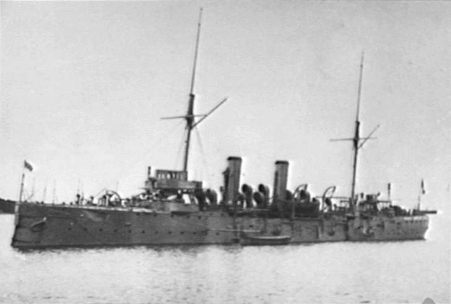
HMS Tauranga, of the Pearl class, off Tasmania (AWM)
The Apollo were designed following a path started with the third-class Barham in 1889, alongside the much larger Blake class the same year, and the Pearl-class cruisers, which were true 2nd class ships, separate from the Diadem class for example. The latter were on paper “protected cruisers” but largely above in rank and tonnage. To underline this, they were denominated “1st class protected cruisers”. In reality the “protected” cruiser line started with the Iris class back in 1877. They were followed by the Comus, Leander class, Calypso, Surprise, Mersey in the early 1880s, in the 1500-4000 tons range.
Development of the Apollo class
The Pearl class in 1889 was an attempt to design a cheap, 3rd class ship, displacing 2,575 tons and armed with 8-4.7in. However they were judged quite light for their intended protected cruiser role and a parallel design was started at the same time, the Apollo class. They were ordered along with the 1889 Naval Defence Act, faster, with a longer range, displacing 3,400 tons, and armed with two 6-in guns in addition of six 4.7in guns. Not only this was an exceptionally large class with 21 ships, but they were intended for multiple roles in far away stations.
The class comprised the Latona, Melampus, Andromache, Sirius, Terpsichore, Naiad, Pique, Thetis, Sybille, Apollo, Tribune, Spartan, Defiance, Indefatigable, Rainbow, Sappho, Intrepid, Brilliant, Retribution, Scylla, Aeolus, Iphigenia. They were built at Chatham Dockyard, Vickers
Barrow-in-Furness, Samuda Brothers (Poplar), Robert Stephenson Hebburn, J and G Thomson Clydebank, Sheerness Dockyard, London & Glasgow, Palmers, Armstrong Mitchell, Elswick Jarrow and Armstrong Mitchell Elswick. They were all laid down in 1889-90, launched in 1891-92 and completed 1891-94.
Design of the Apollo class
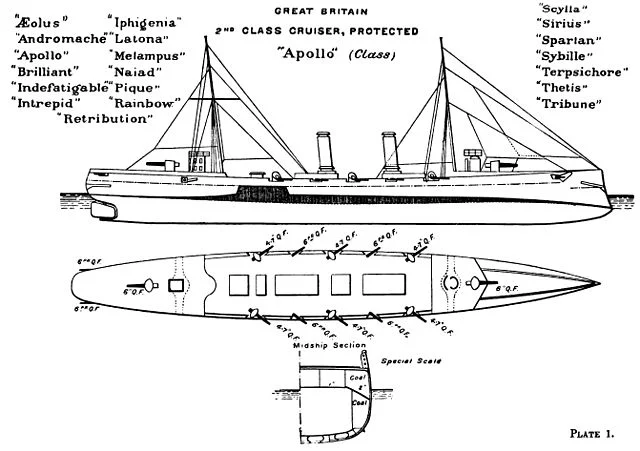
The Apollo class were conventional for the time, with a relatively tall hull topped by a turtleback metallic foredeck, an aft quarterdeck, and a central well deck with various superstructures and woodwork. The main 6-in guns were placed forward and aft, shielded, in position offering the maximum fire angle. The 4.7 in guns were placed in sponsons along the hull behind walls, alternating with the smaller QF guns. Four more were placed in prow and stern casemate recesses, probably wet in heavy weather. The ships had two space funnels, a forward conning tower on which was placed the main bridge, extending to the wings, and same aft, with a backup wheelhouse.
Powerplant
The powerplant comprised twin propellers connected by shafts to two triple expansion engines from Earle’s Shipbuilding – in the case of HMS Andromache (varying among shipyards). This was rated for 7000 ihp (natural draught) and 9000 ihp (forced draught) at least according to the figures given for the lead ship, HMS Apollo. Top speed was 19.75 knots (36.58 km/h), 20 knots in forced draught. Radius was about 3000-5000 nm (information not found) thanks to 535 long tons (544 t) of coal.
Armament
As said above, the main armament was an upgrade over the Pearl class. The main change was the addition of two 6-inch (152 mm) QF guns, placed under masks on the forward deck and on the aft deck with good firing positions.
A typical WW1 era Elswick naval gun. Called QF 6-inch 40 calibre naval gun, or 15 cm/40 (6″) 41st Year Type in the British nomenclature, it wad developed in the 1880s to exploit the new “QF” technology, involving loading the propellant charge in a brass case with primer in its base. The latter also sealed the breach, making for a simple and more compact gun mechanism. This was suppose to give an advantage over classic “Breech Loading” system, with separate propellant in cloth bags and separate friction/percussion breech tube. The principle was also adapted to the much smaller Hotchkiss/Nordenfelt naval guns from 1885 onwards.
The guns figures were 5-7 rounds per minute in rate of fire, a Muzzle velocity of 2,154 feet per second (657 m/s), an Effective firing range of 10,000 yards (9,140 m) at 20°elevation but 15,000 yards (13,700 m) at 28°elevation (and dispersion, low accuracy).
The secondary armament comprised six QF 4.7-inch (120 mm) guns installed in side posts, single mounts, unmasked. The steel walls were supposed to offer some protection at least against shell splinters. The Elswick QF 4.7-inch Mk I was also new, dating back from 1885, and it used the same Separate loading QF system as its “larger brother” the 6-in. The systems were about the same. As a result, rate of fire was bout 5–6 rounds per minute, muzzle velocity 1,786 feet per second (544 m/s) or 2,150 feet per second (660 m/s) depending of the propellant, gunpowder or cordite (which was likely on the Apollo). Maximum firing range was 10,000 yards (9,100 m) at 20°, and 12,000 yards (11,000 m) at 24°.
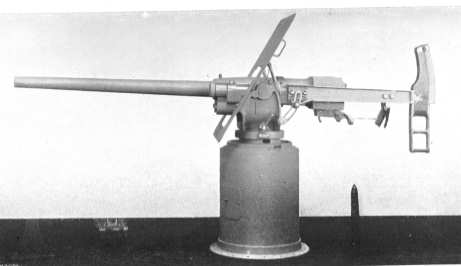
A 6-pdr circa 1897. It was not very different from the ones used by the APOLLO CLASS.
The tertiary armament consisted in eight 6-pounder guns (57 mm) placed behind the same walls in part, either side (four), intertwined with the 5-in pieces, and the remainder four were placed in embrasured ports with limited traverse at the bow and the stern.
The 6-pdr was a relatively simple gun to handle, elevation was shoulder-made by the gunner, assisted by a loader. This was originally a Hotchkiss et Cie design in France, and the licence was purchased by Elswick because of its high rate of fire and accuracy. About 4,000 were manufactured by he British arsenal. The idea was to pummel approaching torpedo boats before they were at torpedo launch range. Rate of fire was about 25 rounds a minute. They used a Vertical sliding-block with an Hydro-spring recoil system for fast reloading. Muzzle velocity was 1,818 feet per second (554 m/s) and effective firing range about 4,000 yards (3,700 m).
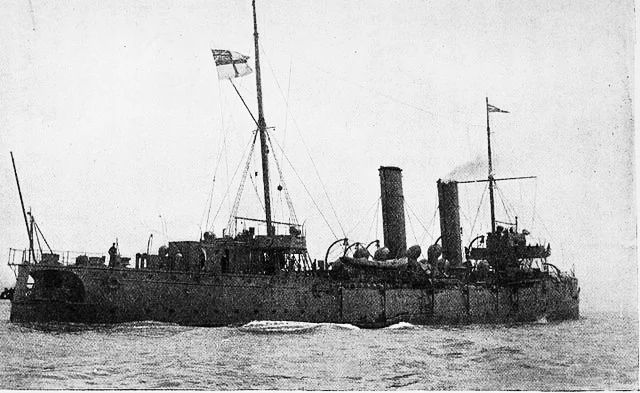
Lastly, there were four torpedo tubes of 14 in (360 mm) above water in a lozenge configuration. There is no mentions of a reload. Three of these were installed on the upper deck, two broadside abreast the mainmast, one in the bow, a fourth one in the stern on the main deck.
Protection
Like most protected cruisers, the armor level was limited to horizontal surfaces, the inner armoured strake placed above the engines and ammo magazines, with side compartments filled with coal acting as cofferdams, one above the waterline but sloping below, and another below, used as ASW protection. There was also a larger section in citadel between the aft funnel and quarterdeck, chiefly protecting the engines. This was a 5-inch (127 mm) armoured glacis over the hatch where the engine cylinders projected above the deck.
The class itself was completely homogenous but later eight ships were slightly modified, known as a Astraea class, part of the same naval act. The 1 1⁄4-inch (32 mm) armoured deck was mostly flat but sloped with 2-inch (51 mm) sections. The conning tower was protected by 3 inches (76 mm) walls. Gun shields were 4 1⁄2 inches (114 mm) thick.
The end of Apollo class ships: Zeebruge Raid
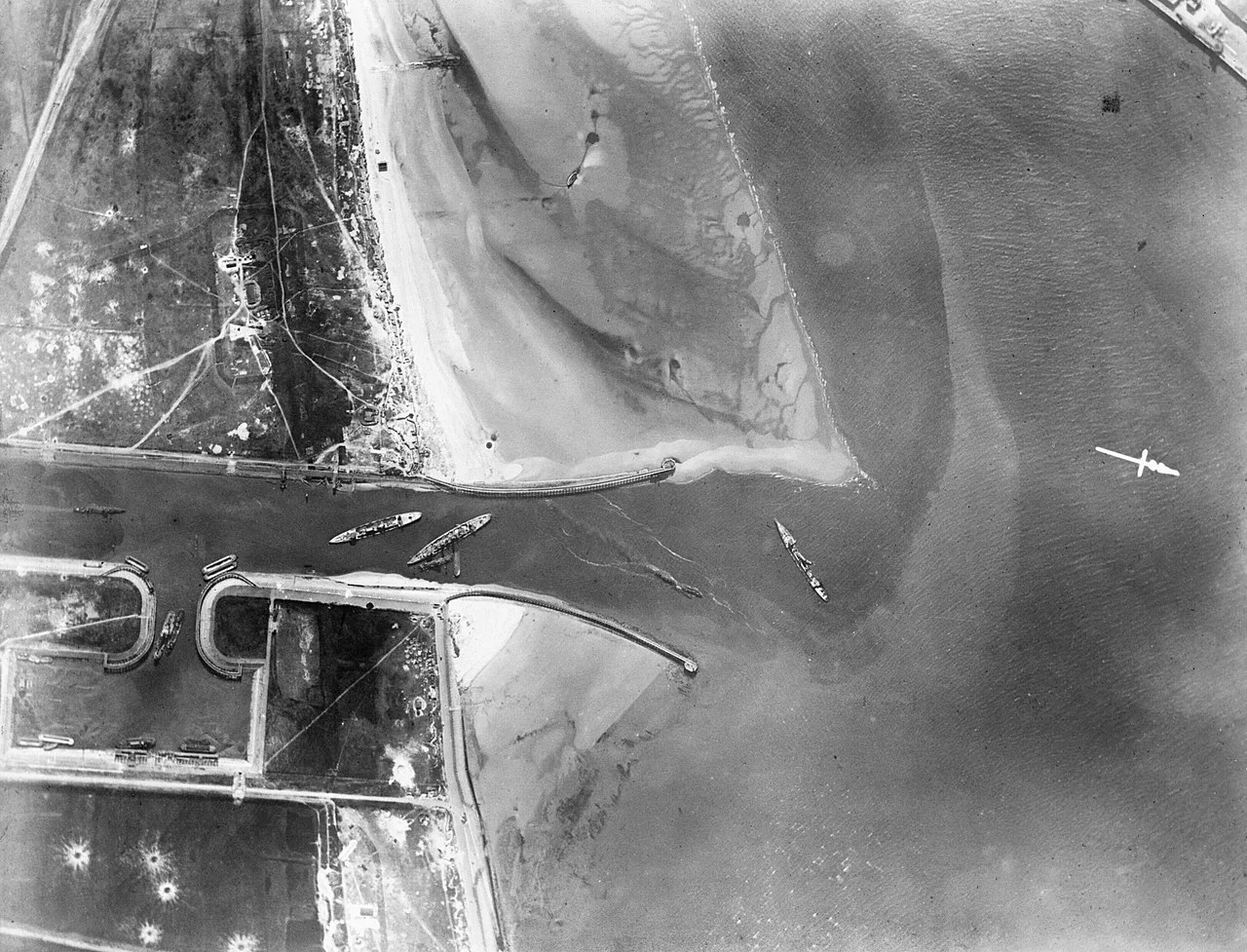
Six cruisers in all of the Apollo class were requisitioned and mobilized to be sunk as blockships in the Bruge canal, ending in Zeebruge. The Zeebruge raid: The idea was to launch an assault, neutralize defence, allowing these obsolete cruisers to be towed in place and sunk to block the entrance. Indeed Bruge has been for a long an operating advanced base for German coastal U-Boat classes, more useful there than staying in home waters defensive spots in the Baltic or west North sea coast. There has been already an attempt on 2 November 1917, cancelled at the last moment. At last on 23 April 1918 another attempt was made, the same day as intensive coastal bombardments took place both in Ostende and Zeebruge, the first as a diversion.
The Zeebruge raid was probably the most daring and costly attack in WW1, “commando-style”. The closest reference would be the raid on St Nazaire in 1942, but the operation on Zeebruge was somewhat of a grander scale and more complex. There was a diversion attack against the mile-long Zeebrugge mole made by the obsolete cruiser HMS Vindictive, completely transformed for the occasion with flamethrowers, mortars, machine-gun posts and many improvised protections, sandbags, planks and metal sheets. She was to lead the main assault, assisted by the Mersey ferries Daffodil and Iris II. The attack launched by night came under heavy fire by the Germans and was costly: 227 dead, 356 wounded, whereas the Germans suffered only 8 dead
and 16 wounded. Later, to avoid reinforcements, submarine HMS C3 (Lt. R. D. Sandford) was conducted under the viaduct and blown up there.
On their side, the obsolete cruisers chosen, HMS Thetis, Imphigenia and Intreprid were filled with concrete and towed to site. However, since the attack on the mole failed, German artillery was soon able to direct fire on the approaching cruisers. The first, HMS Thetis was badly hit and eventually hit a debris due to her high draught, was stuck there and had to be scuttled prematurely and evacuated by her crew. Both Iphigenia and Intrepid were able to reach the entrance of the canal and were scuttled there. Unfortunately, one hit a sandbank and cannot be placed correctly.
Later one, the remaining obsolete submarines of the C class, C1 and C2, carried five tons of amatol packed into their fore-ends needed to be steered automatically to the viaduct, but C1 failed her towing and arrived too late for the operation while the automatic steering of C3 failed and she blew up not as close as planned.
All in all, the Zeebruge raid was a daring operation which mostly failed. It was not for the human cost (the Mole was never taken), but only two of the three cruisers were scuttled on their respective objective on the canal entrance, one because of a sandbank. The result was they both only partly blocked the way out. The following day, a German boat was able to slip through and soon afterwards, with some manoeuvring, U-Boats were able to cross the blocking without much hassle and resume operations.
Career of the Apollo class
In a general way, most of the ships considered here were discarded and placed in reserve before the war and some were scrapped. The only exception was the serie of 1907 converted as minelaying cruisers. Those written off and not covered in this post were the HMS Broken up in 1910 after twenty years, HMS Scylla, Terpsichore, Aeolus, were broken of in 1914, Tribune, Retribution and Pique in 1911, Indefatigable in 1913 whereas HMS Sybille was wrecked in 1901. The one with the longest service was HMS Spartan, discarded in 1931. Five more were used as blockships in 1918, notably, to block the port of Zeebruge.
 HMS Andromache
HMS Andromache
HMS Andromache was built in Chatham, and after commission, she was present at the Naval Review at Spithead on 26 June 1897 (Diamond Jubilee of Queen Victoria). In February 1900 together with HMS Apollo she joined the Devonport Fleet Reserve. Previously she has been doing fleet manoeuvres but now she was mothballed. In June of the same year however, from Devonport came an order of mobilization, to be completed in 10 July. Francis Alan Richard Bowles became captain in April 1902 and later in June the ship was versed into the active Naval Reserve drill, North Shields.She She was present at the fleet review Spithead in August 1902 for King Edward VII coronation. Afterwards she collided with the torpedo gunboat Leda in 1908 in Harwich harbour. She received such a water breach that she has to be beached to avoid sinking. In September 1909 she was repaired but also converted to a minelayer at Chatham Dockyard.
In her new career, HMS Andromache took part exercises off the East coast in the winter of 1910. However during the night she collided with the steamship Neapolitan Prince. However this only caused the destruction of her starboard boats and davits. In August 1914 when the war broke out she joined the Minelayer Squadron. Afterwards she was reduced to harbour duties, placed in reserved and finally Broken up in 1920.
 HMS Apollo
HMS Apollo
HMS Apollo first part of career was short and relatively uneventful, under Captain Richard Poore and later the future Vice Admiral George Anson Primrose from 1893. She participated in the Fleet Review, Diamond Jubilee in 1897 and Spithead 1902 (King Edward VII cornonation). She joined the reserve in 1900, and later she was totally disarmed and converted to a minelayer in 1909. At Chatham, mine rails were fitted on her maindeck, enough for a hundred mines. Her after deckhouse was extended and former ammo magazines were converted to storerooms. When the war broke out, she received four QF 4.7-inch (120 mm) guns, kept until she was disarmed again in 1915 and reduced to harbor duties. Before that, she and her sisters formed a squadron responsible for the Dover-Nore sector. She was broken up in 1920.
 HMS Latona
HMS Latona
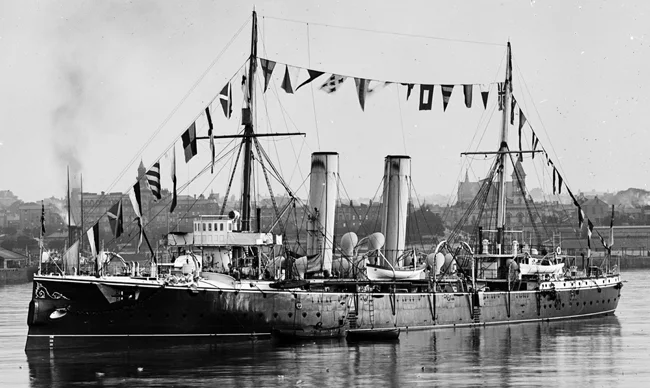
Built by Vickers Barrow-in-Furness, HMS Latona was completed in April 1891, present at the Spithead naval review of 26 June 1897 (Diamond Jubilee). She sailed to the West Indies under Captain Baynes. She was bakck to Portsmouth by 27 January 1900. Her service honor has to save the crew the sinking barque Oxford. In 1909 however she was paid off at Portsmouth, 8 February 1900 but mobilized in July. In August 1902 she was refit to become a depot ship for submarines at Portsmouth. Crews of these lived onboard the cruiser. She was recommissioned in October 1902 under Captain Reginald Bacon, also Inspecting Captain of Submarines.
In June 1908 however she was conducted at Chatham in June 1908 to be converted as a minelayer, which was achieved in 1910. In 1913, HMS Latona served with the Minelayer Squadron, Second Fleet. In January 1916 she laid mines between Cape Alanguli and Apostula Island and in 13–14 December 1916 the crew was implicated in a friendly fire on an aircraft coming from Kum-Kale. The cruiser minelayer was paid off on 23 December 1918 at Malta, placed on harbour duties in 1919 and sold for scrap in 1920.
 HMS Naiad
HMS Naiad
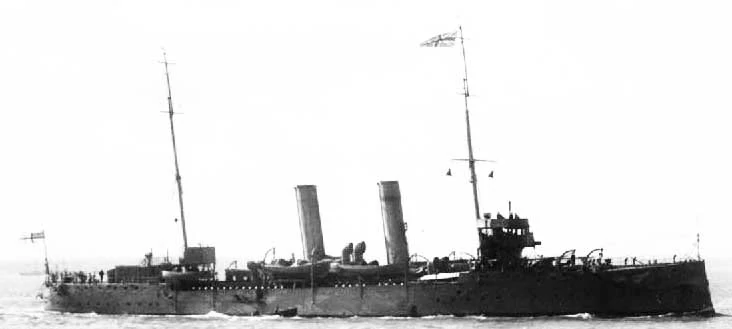
Built at the Naval Construction and Armaments Co (Vickers), HMS Naiad participated in the Naval Review at Spithead, Queen Victoria’s Diamond Jubilee. Under Captain Alexander Bethell from 1901, she served in the Mediterranean Fleet, transferred later to South Africa, participating in the Second Boer War until November 1901. 117 members of her crew constituted a naval Brigade ashore, fighting at Cape Colony. In 1902 she visited Alexandria, Port Said and Aden.
She served in the Indian ocean and in British Somaliland until 1904; Again her crew participated in land fighting and received 285 medals and clasps for the campaign. In 1910, HMS Naiad was converted to a minelayer. She participated in WW1 without notable even and was relegated to harbour duties in 1919, sold in 1922.
 HMS Sappho
HMS Sappho
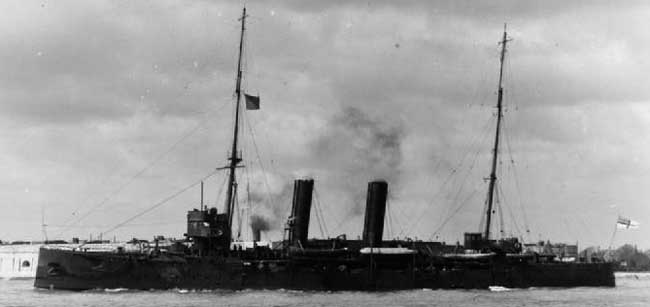
HMS Sappho served from 1900 as a troop ship during the Second Boer War. In June 1901 she ran aground while crossing the Durban Bar. She was escorted back from Las Palmas by HMS Furious, first at Sheerness and then Chatham for repairs, paid off on 18 September 1901. Back into service she was rammed by the Wilson Line steamer in thick fog off Dungeness. She almost sank, but taken in two by nearby tugs, she was back to Chatham for repairs. In six days she was back into service. In September 1909 she was at Portsmouth for her minelayer conversion.
During WW1 HMS Sappho was attached to the Grand Fleet and unlike her sisters she was initially deployed on patrol purposes, north-east of the Shetlands. She barred the way to possible German incursions to protect a convoy carrying troops from Canada to England, North of the Orkneys. In May 1918, she was used as a blockship, scuttled in the mouth of Ostend harbour, Belgium (Second Ostend Raid). The idea was to block German U-boats coming from Bruges. She however suffered severe engine damage en route, after a boiler explosion and had to turn back. She was therefore not part of the operation. In reserve from then, she was scrapped in 1921.
 HMS Thetis
HMS Thetis
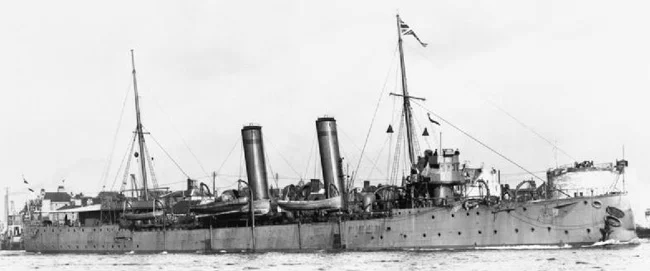
HMS Thetis was launched on 13 December 1890 and her first mission was to patrol the Bering Sea Patrol with American warships to dissuade poaching in the Bering Sea. Captain W. Stokes-Rees took command when the ship was sent to the Mediterranean Station. She was relieved in March 1901. Paid of at Chatham in early June 1901, she joined like may of her sisters the Fleet reserve. Captain Julian Charles Allix Wilkinson replaced the former officer in November 1902 when recommissioned at Chatham. Her new assignment was the China Station. She would return home in 1905 or 1906 to be later converted as a mine-layer. She served as such until 1915-16 before being mothballed. Instead of being scrapped, she was requisitioned for the second Zeebruge raid. Laden with concrete, she was towed to be sunk as a blockship in the Zeebruge the canal on 23 April 1918.
 HMS Brillant
HMS Brillant
.webp)
HMS Brilliant was commissioned at Portsmouth in October 1901, under orders of Captain Hugh Pigot Williams. She served at first with the Cruiser Squadron ad by May 1902 was refitted in Portsmouth. On 16 August she took part in the Spithead review, coronation of King Edward VII. Next she was assigned to the Aegean Sea and participated in combined exercises of the Mediterranean Fleet. She was back in Portsmouth in October 1902.
She spent some time in reserve, and her career is not known until 1914 although she has not been converted as a minelayer.
On 23 October 1914 HMS Brilliant and HMS Sirius plus accompanying sloops and destroyers shelled German troops on the Belgian coast. She did the same on 28 October, but she was hit back by German artillery this time. She deplored one killed and several wounded. On 11 November Dover saw an U-boat kill and was no longer considered secure for surface ships. Admiral Horace Hood of the Dover Patrol ordered HMS Brilliant and Sirius to Sheerness for safety. Both would serve as guardships.
In June 1915 however, HMS Brilliant was reaffected on the Tyne in the same role. During the night of 15/16 June 1915, the German Zeppelin L10 bombed objectives on the Tyne, at Jarrow, Wallsend and South Shields but HMS Brilliant fired at it. The airship escaped. In July 1917 the cruiser was now at Lerwick in the Shetlands, downgraded as a depot ship for trawlers and patrol boats patrolling the area. She was scrapped in 1920.
 HMS Intrepid
HMS Intrepid
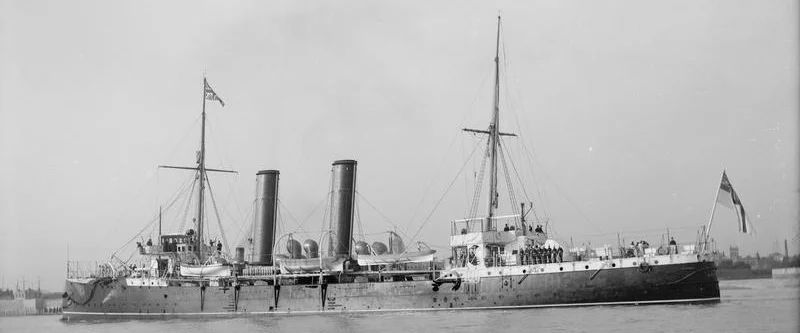
HMS Intrepid was built at the London and Glasgow Shipbuilding Company, completed in November 1892 and held at Portsmouth. From 1896 to 1899 she served on the North American West Indian Station, but returned to Portsmouth. Under Captain Richard Bowles Farquhar in October 1902 she sailed for the Mediterranean station, after making a stop at Gibraltar and Malta. Until 1904 she visited various ports and participated in many exercises. She was back in late October 1902 at Port Said.
From 1904 she saw harbour service at Portsmouth and spent her career here until 1909. However as she became obsolete as a cruiser, she was taken in hands to be converted in Chatham Dockyard as a minelayer. In this new role whe could lay down 100 mines and was still protected with four 4.7-inch guns. In 1910 she was based in Chatham and was sent to Dover in 1914, starting a serie of minelaying missions for the Dover Patrol.
In 1915-16 she was redeployed as a Depot ship in Northern Russia, the White Sea in 1917, as part of the British North Russia Squadron.
Back home in 1918 she was chose like HMS Iphigenia and Thetis to be sent as a blockship during the Zeebrugge Raid. She was filled with cement and sunk at the entrance to the Bruges Canal.
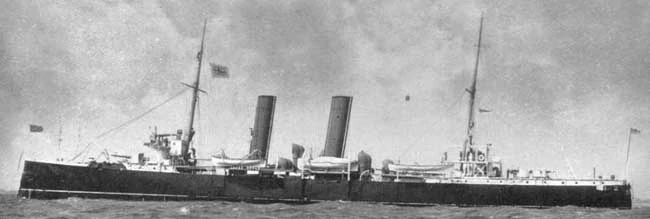
HMS Iphigenia was built at the London and Glasgow Shipbuilding Company, and based in the China Station in 1906. Considered as aobsolete she was taken in hands for a reconversion at Chatham Dockyard into a minelayer, completed by August 1907. She served with the Dover patrol and at Sheerness. In 1917, she was used as a depot ship in the White Sea (British North Russia Squadron). She was requisitioned like HMS Intrepid and Thetis to be used as a blockship during the Zeebrugge Raid, sunk in the Bruges Canal and like the others broken up when the canal was cleared.
 HMS Rainbow (HCMS Rainbow)
HMS Rainbow (HCMS Rainbow)
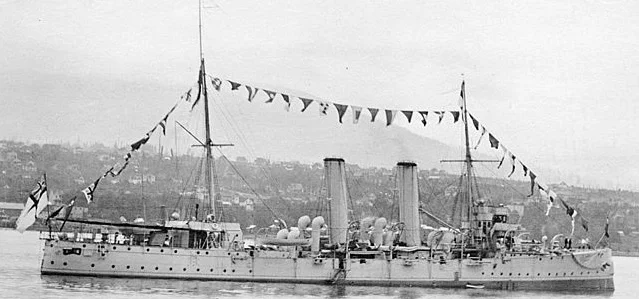
HMS Rainbow was heavier than the other cruisers at 3,600 long tons (3,700 t), and sheathed in wood and copper for tropical service, adding 200 long tons (200 t) to her displacement. Her beam increased to 43 feet 8 inches (13.31 m), draught to 18 feet 6 inches (5.64 m). She has been built at Palmers at Hebburn-On-Tyne on 30 December 1889, entering service in January 1893. At first, she served on the China Station, Hong Kong from 1895 to 1898. She was later based in Malta until 1899.
At the time, like other Apollo class cruisers, the Admiralty had a scrutiny on her operating costs. These were deemed excessive and from 1900 and 1909, she was placed in semi-reserve in home waters. She had a crew rotation used as a training cycle. From December 1901 her Captain was Thomas Young Greet, at Devonport. HMS Rainbow also served under his command in the Mediterranean by April 1902, participated in the Spithead review of August 1902 (King Edward VII Cornotation). Captain Charles Delabere Granville took command a little after. She was back in the Mediterranean, visting Suda Bay in Crete. In October 1902 she was refitted at Devonport. Two years later she was restricted to harbour duty and in early 1909, decommissioned. She was presented to Canada in 1910, and recommissioned as HMCS Rainbow on 4 August.
More: Canadian Navy
 HMS Sirius
HMS Sirius
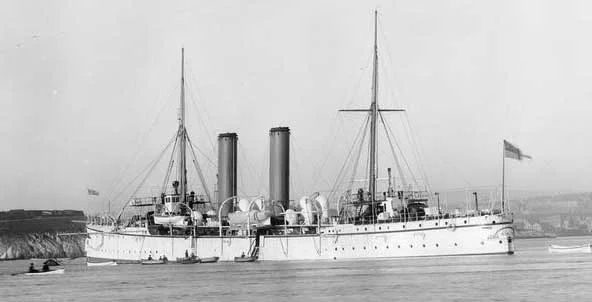
HMS Sirius and HMS Spartan were both ordered from Armstrong’s Elswick shipyard. HMS Sirius served off America from 1892 to 1895 and moved to the China station where she served from 1903 to 1905. Back home she was placed in reserve at Devonport. She was not taken in hands for a minelayer conversion. In February 1912 HMS Sirius became instead a training cruiser, and in October 1914 she was deployed to support Belgian troops at the Battle of the Yser, making several artillery runs from 23 October onwards. She was reversed to the Nore Command until March 1915, and became a guardship on the East coast. Later one she was sent to West Africa, remaining there until 1918. In April 1918 she was chosen to be filled with concrete and towed to Ostend harbour, blocking the exit from Bruges to the North Sea to German U-Boats.
 HMS Spartan
HMS Spartan
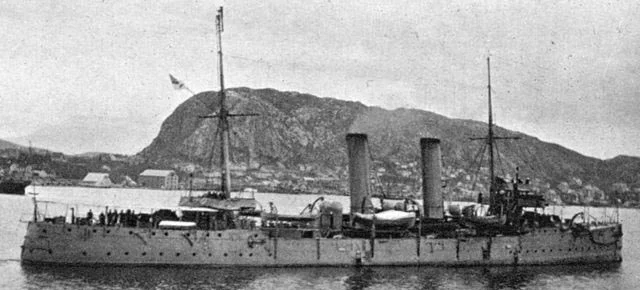
HMS Spartan was refitted in 1899 and ready for commission again in early February 1900. She first served with the A division, Devonport Fleet reserve. From 1907 she was a harbour defense ship. he stayed here during the war as depot ship with a reduced crew. She was not broken eventually
and in 1921 was on duty again for the Royal Navy torpedo school at Devonport. She was renamed HMS Defiance, like the first ship housing the school originally. She was renamed again Defiance II in August 1921 and sold for scrap on 26 June 1931, the last Apollo class cruiser in existence.

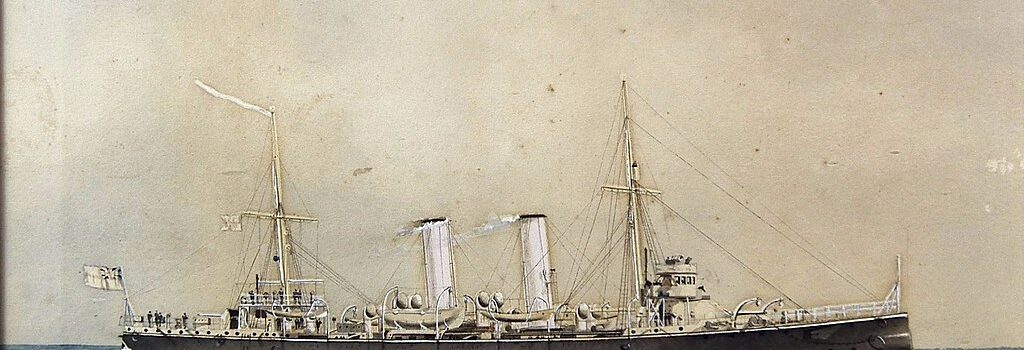
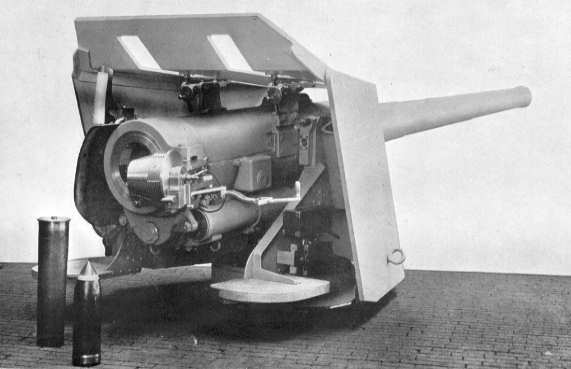
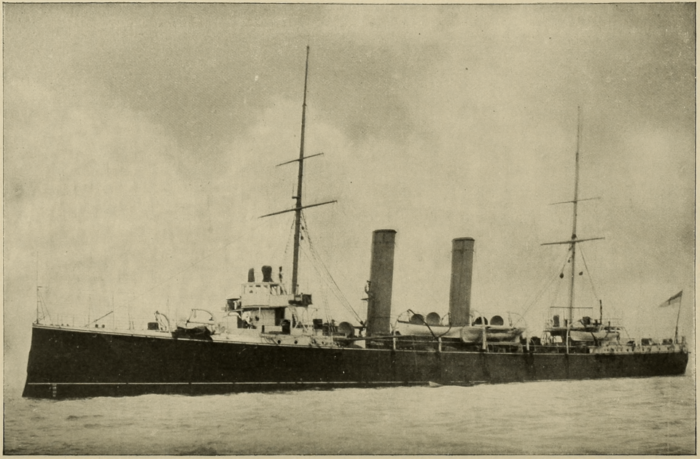
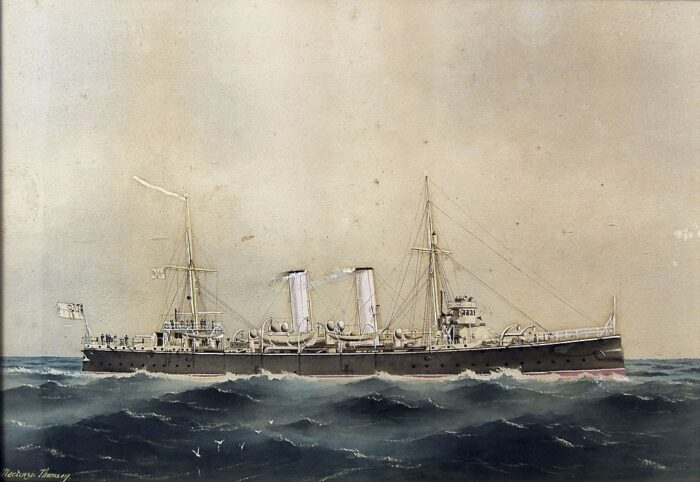
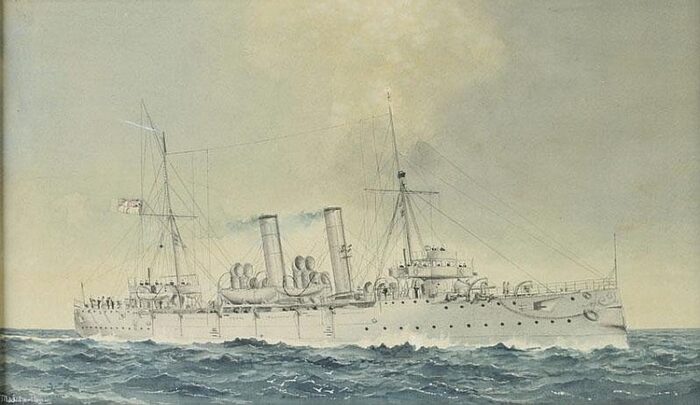
 Latest Facebook Entry -
Latest Facebook Entry -  X(Tweeter) Naval Encyclopedia's deck archive
X(Tweeter) Naval Encyclopedia's deck archive Instagram (@navalencyc)
Instagram (@navalencyc)





 French Navy
French Navy Royal Navy
Royal Navy Russian Navy
Russian Navy Armada Espanola
Armada Espanola Austrian Navy
Austrian Navy K.u.K. Kriegsmarine
K.u.K. Kriegsmarine Dansk Marine
Dansk Marine Nautiko Hellenon
Nautiko Hellenon Koninklije Marine 1870
Koninklije Marine 1870 Marinha do Brasil
Marinha do Brasil Osmanlı Donanması
Osmanlı Donanması Marina Do Peru
Marina Do Peru Marinha do Portugal
Marinha do Portugal Regia Marina 1870
Regia Marina 1870 Nihhon Kaigun 1870
Nihhon Kaigun 1870 Preußische Marine 1870
Preußische Marine 1870 Russkiy Flot 1870
Russkiy Flot 1870 Svenska marinen
Svenska marinen Søværnet
Søværnet Union Navy
Union Navy Confederate Navy
Confederate Navy Armada de Argentina
Armada de Argentina Imperial Chinese Navy
Imperial Chinese Navy Marinha do Portugal
Marinha do Portugal Mexico
Mexico Kaiserliche Marine
Kaiserliche Marine 1898 US Navy
1898 US Navy Sovietskiy Flot
Sovietskiy Flot Royal Canadian Navy
Royal Canadian Navy Royal Australian Navy
Royal Australian Navy RNZN Fleet
RNZN Fleet Chinese Navy 1937
Chinese Navy 1937 Kriegsmarine
Kriegsmarine Chilean Navy
Chilean Navy Danish Navy
Danish Navy Finnish Navy
Finnish Navy Hellenic Navy
Hellenic Navy Polish Navy
Polish Navy Romanian Navy
Romanian Navy Turkish Navy
Turkish Navy Royal Yugoslav Navy
Royal Yugoslav Navy Royal Thai Navy
Royal Thai Navy Minor Navies
Minor Navies Albania
Albania Austria
Austria Belgium
Belgium Columbia
Columbia Costa Rica
Costa Rica Cuba
Cuba Czechoslovakia
Czechoslovakia Dominican Republic
Dominican Republic Haiti
Haiti Hungary
Hungary Honduras
Honduras Estonia
Estonia Iceland
Iceland Eire
Eire Equador
Equador Iran
Iran Iraq
Iraq Latvia
Latvia Liberia
Liberia Lithuania
Lithuania Mandchukuo
Mandchukuo Morocco
Morocco Nicaragua
Nicaragua Persia
Persia San Salvador
San Salvador Sarawak
Sarawak Uruguay
Uruguay Venezuela
Venezuela Zanzibar
Zanzibar Warsaw Pact Navies
Warsaw Pact Navies Bulgaria
Bulgaria Hungary
Hungary

 Bundesmarine
Bundesmarine Dutch Navy
Dutch Navy Hellenic Navy
Hellenic Navy Marina Militare
Marina Militare Yugoslav Navy
Yugoslav Navy Chinese Navy
Chinese Navy Indian Navy
Indian Navy Indonesian Navy
Indonesian Navy JMSDF
JMSDF North Korean Navy
North Korean Navy Pakistani Navy
Pakistani Navy Philippines Navy
Philippines Navy ROKN
ROKN Rep. of Singapore Navy
Rep. of Singapore Navy Taiwanese Navy
Taiwanese Navy IDF Navy
IDF Navy Saudi Navy
Saudi Navy Royal New Zealand Navy
Royal New Zealand Navy Egyptian Navy
Egyptian Navy South African Navy
South African Navy






























 Ukrainian Navy
Ukrainian Navy dbodesign
dbodesign
Hello from Australia.
Using original 1888 plans/drawings from the NMM Greenwich I’m currently building (plank on frame) a 1:72 scale, RC of the Apollo Class Protected Cruiser, HMS/HMCS Rainbow and was wondering if you might have any detail photos, diagrams, etc. of the Bow, Stern and Main Deck of these amazingly beautiful vessels that I could use?
Any assistance would be greatly appreciated.
Kindest regards,
Dave Manning
Hi Dave, sorry i did not answered you earlier, your message went through. No i don’t have more views of what you possess already. Only using creative commons photos.
That’s ok.
Thanks for replying.
If you have any contacts in the National Maritime Museum, Greenwich I’d really appreciate it if someone would give the Archives group a HURRY UP on my Apollo Class General Arrangement drawings.
It’s been over 9 weeks now and I really can’t move on with the build until I know exactly where the prop shafts go, size of the props AND arrangement of the main deck and Bridge.